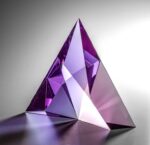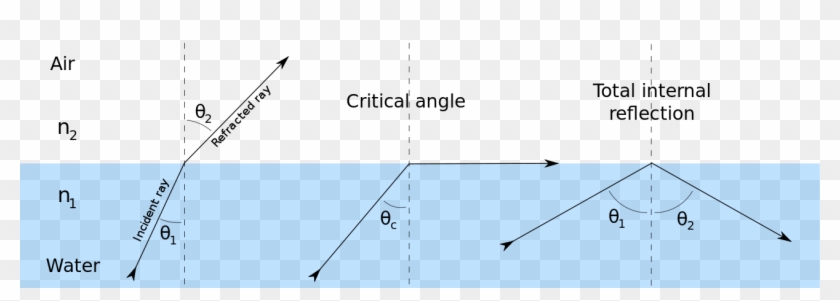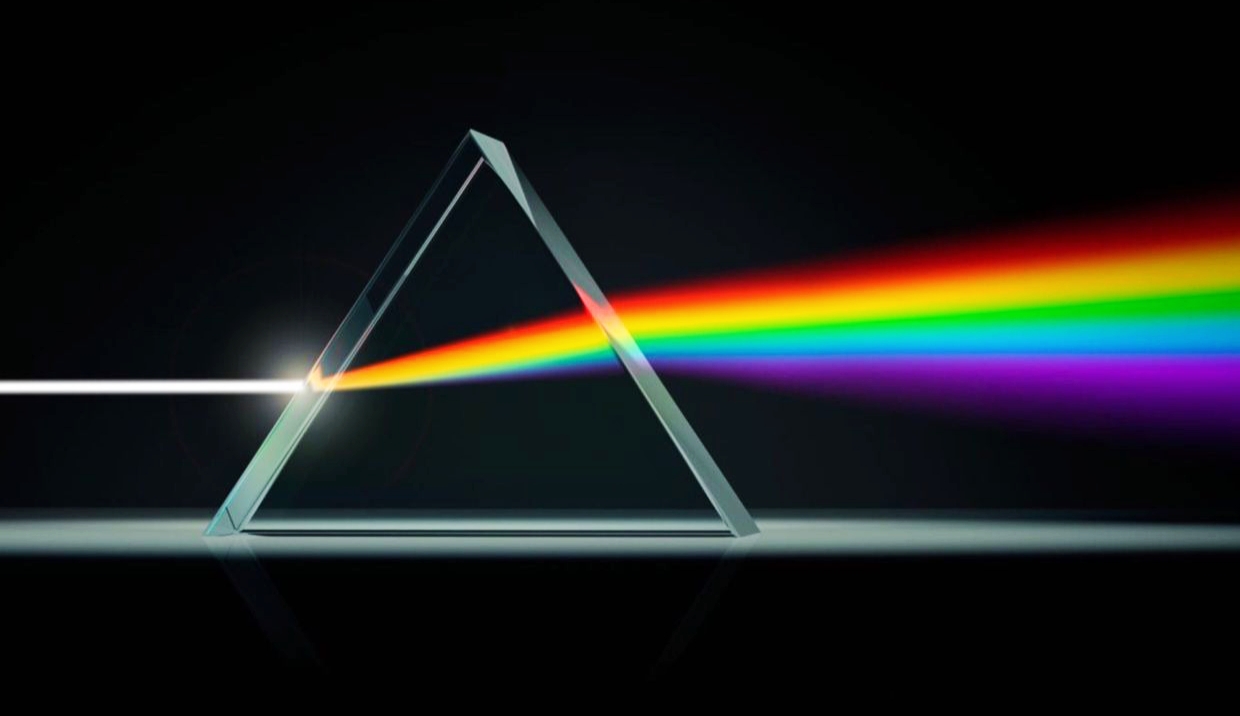Total internal reflection :-

when light travels from and optically denser medium to rarer medium at the interface, it is partly reflected back into the same medium and partly refracted to the second medium, this reflection is called the internal reflection.
- when Ray of light enters from denser medium to a rarer medium, it bends away from the normal and the angle of refraction ( r ) Being larger than the angle of incidence. As the angle of incidence ( i ) increases so does the angle of refraction is 90° at interface between the two media. If the angle of incidence is increased still for the refraction is not possible and the incident ray is totally reflected, this is called total internal reflection.
Conditions for the total internal reflection :-
- Ray of light should be travels from denser medium to rarer medium.
- Value of angle of incidence should be more than the value of critical angle ( Ic ).
Critical angle ( Ic ) :-
The angle of incidence corresponding to an angle of refraction 90° is called the critical angle ( Ic) for the given two media.
Relationship between critical angle and Refractive index :-

Let about refractive index of medium 1 is μ₁ and the medium 2 is μ₂, critical angle Ic
then from Snell’s law
μ₁sinθ₁ = μ₂sinθ₂
where θ₁ = 90⁰ and θ₂ = Ic
μ₁ sin90⁰ = μ₂ sin Ic
μ₁/μ₂ = 1/sin Ic
Thus, refractive index of medium 2 with respect to medium 1
μ₂₁ = μ₂/μ₁ = 1 /sin Ic
Applications of total internal reflection :-
1. Mirage :-
On hot summer days, the air near the ground becomes hotter than the air at higher levels the refractive index of air increases with its density. Hotter air is less dense and has smaller refractive index than the cooler air. the optical density at different layers of air increases with height.
As a result, light from a tall object such as tree, passes through a medium whose refractive index decreases towards the ground.
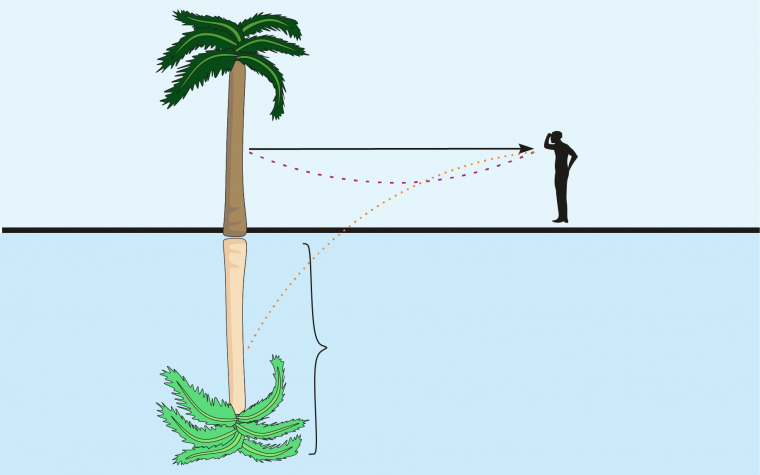
Thus a Ray of light from such an object bends away from the the normal and undergoes total internal reflection. To a distance observer, the light appears to be coming from some where below the ground. The observer naturally assumes that is being reflected from the ground say by a pool of water near the tall object. Such inverted images of distant tall objects cause an optical illusion to the observer, this phenomenon is called mirage.
2. Diamond :-

Diamonds are known for their spectacular brilliance, their brilliance is mainly due to the total internal reflection of light inside them.
The critical angle of diamond – air interface is very small (24·4⁰), therefore once light enters into a diamond. It is very likely to undergo total internal reflection inside it.
By cutting the diamond suitable, multiple total internal reflection can be made to occur.
3. Prism :-

Prism designed to bend light by 90⁰ or by 180⁰ make use of total internal reflection, such a prism is also use to invert images without change in their size.
In both cases the critical angle for the material of the prism must be less than 45⁰
4. Optical fibre :-
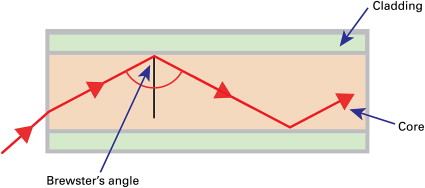
Optical fibres make use of the phenomenon of total internal reflection.
These are fabricated with high quality composite glass fibre consists of a core and cladding.
The refractive index of material of the core is higher than that of the cladding. When a signal ( light ) is directed at one end of the fibre at a suitable angle, it undergoes repeated total internal reflections along the length of the fibre and finally comes out the other end.
Uses of optical fibre :-
( a ) Optical fibres are extensively used for transmitting and receiving electrical signals which are converted to light by transducer.
( b ) They also be used for transmission of optical signals.
( c ) These are use as a light pipe to facilitate visual examination of internal organs like stomach and intestines.


